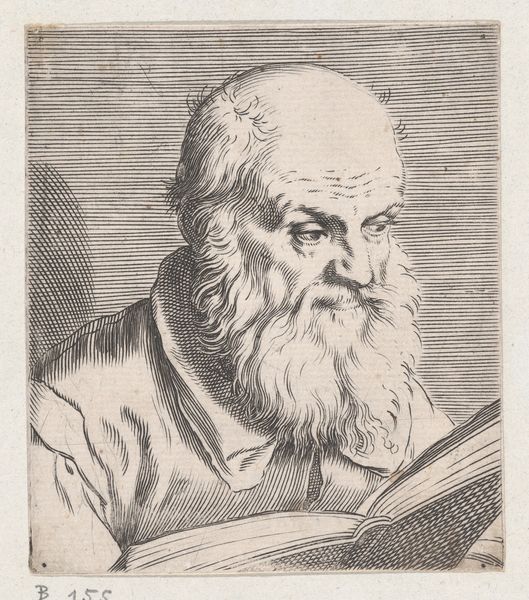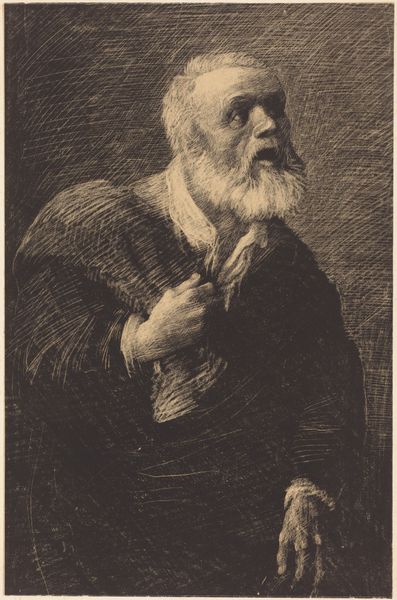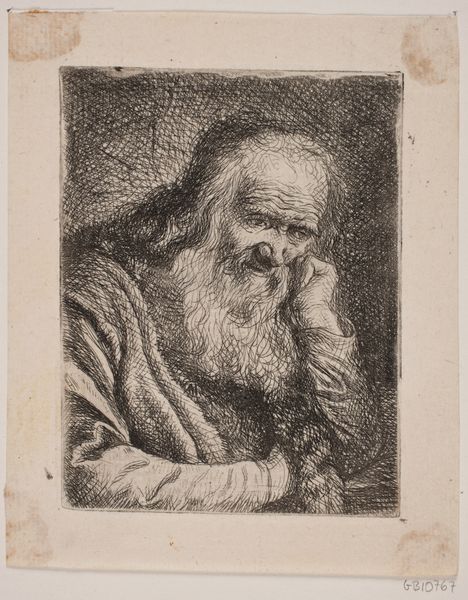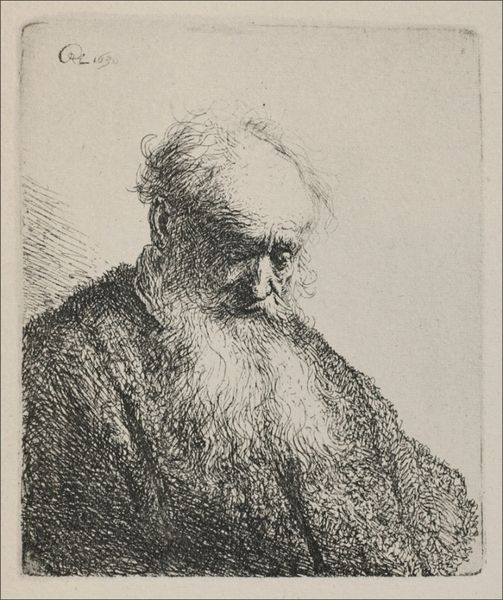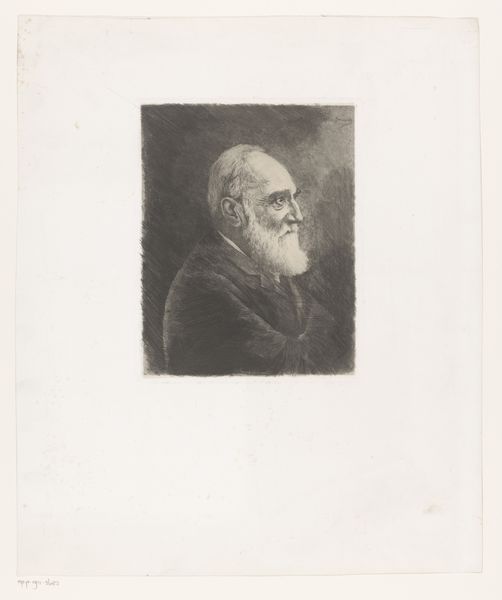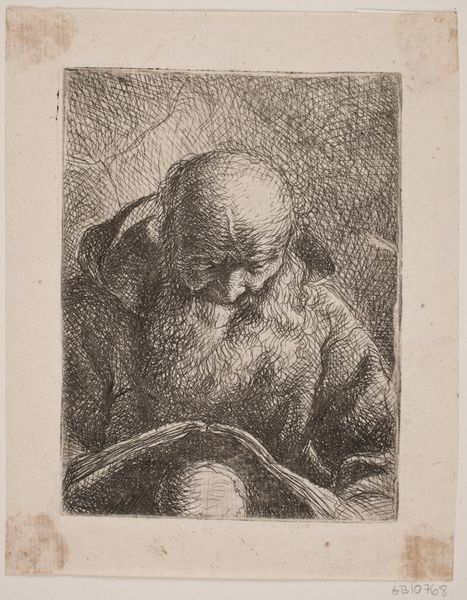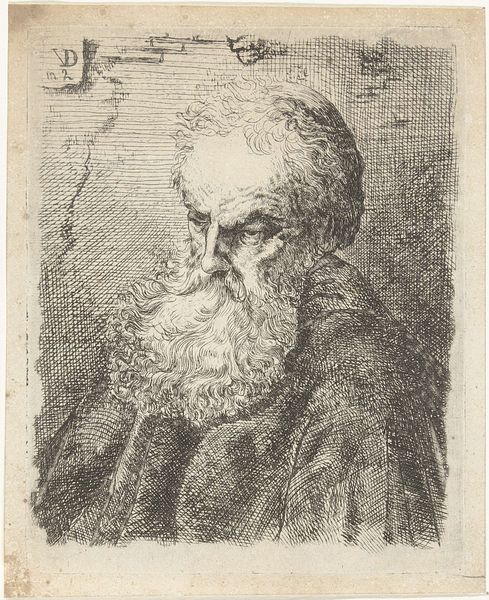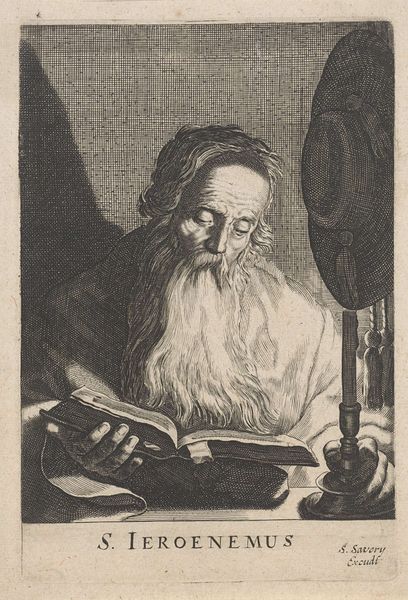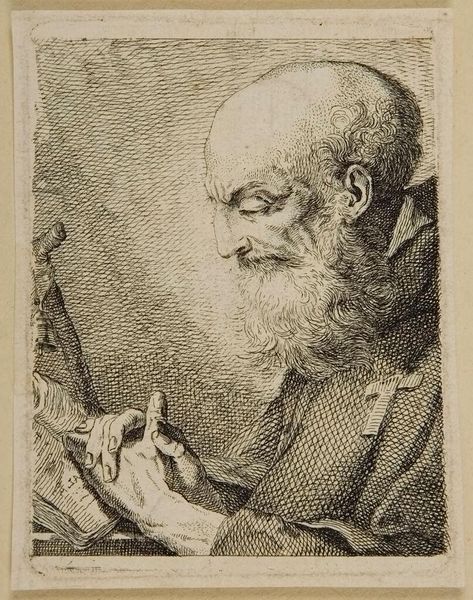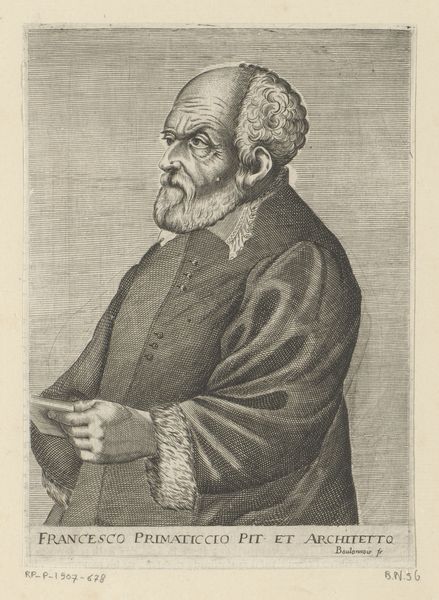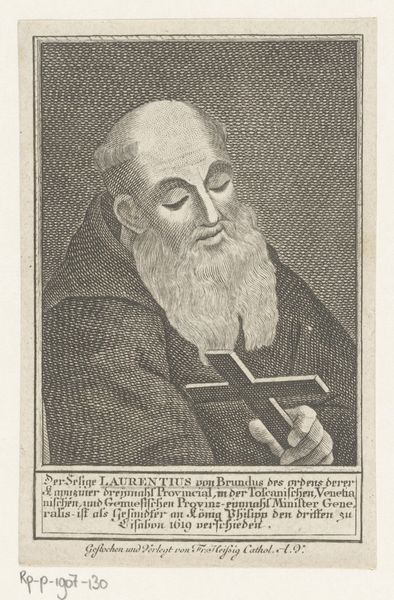
Dimensions: height 94 mm, width 75 mm
Copyright: Rijks Museum: Open Domain
Theodorus de Roode created this etching, “Heilige Antonius,” using the intaglio printmaking process. The image comes from an old master tradition, relying on the incisive action of acid on a metal plate to produce an image in tones of gray. This laborious process involved coating a metal plate with wax, then drawing the design with a sharp needle, exposing the metal beneath. When the plate was immersed in acid, the drawn lines were etched into the metal. The deeper the lines, the more ink they’d hold, resulting in darker tones in the final print. The result is a composition rich in texture, from the saint's beard to the folds of his habit. De Roode’s printmaking process has imbued the artwork with a sense of depth and reverence. Examining such a work through the lens of its making brings us closer to the artist’s hand, reminding us that even in the world of prints, there is skillful labor involved in every impression.
Comments
No comments
Be the first to comment and join the conversation on the ultimate creative platform.
